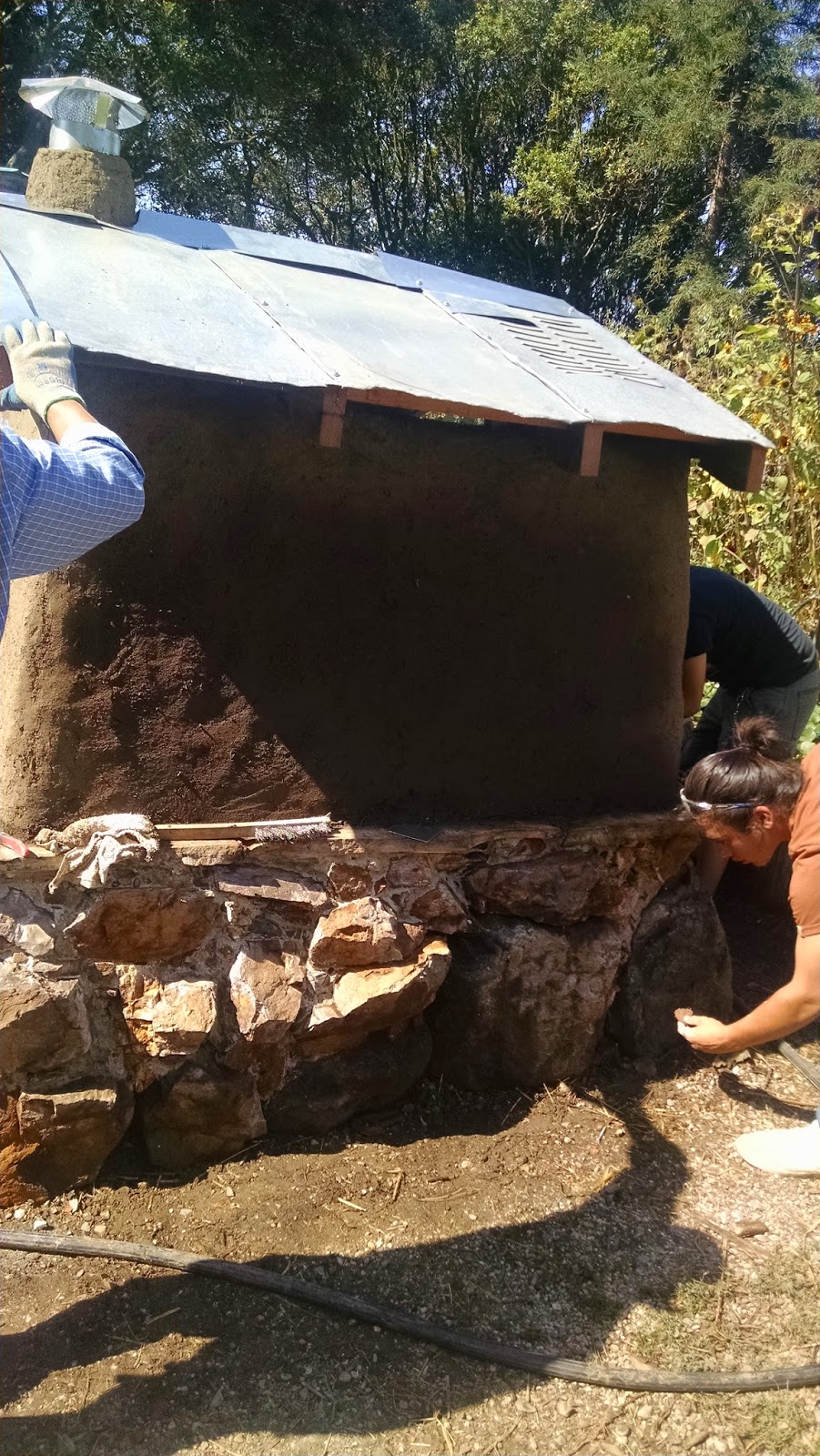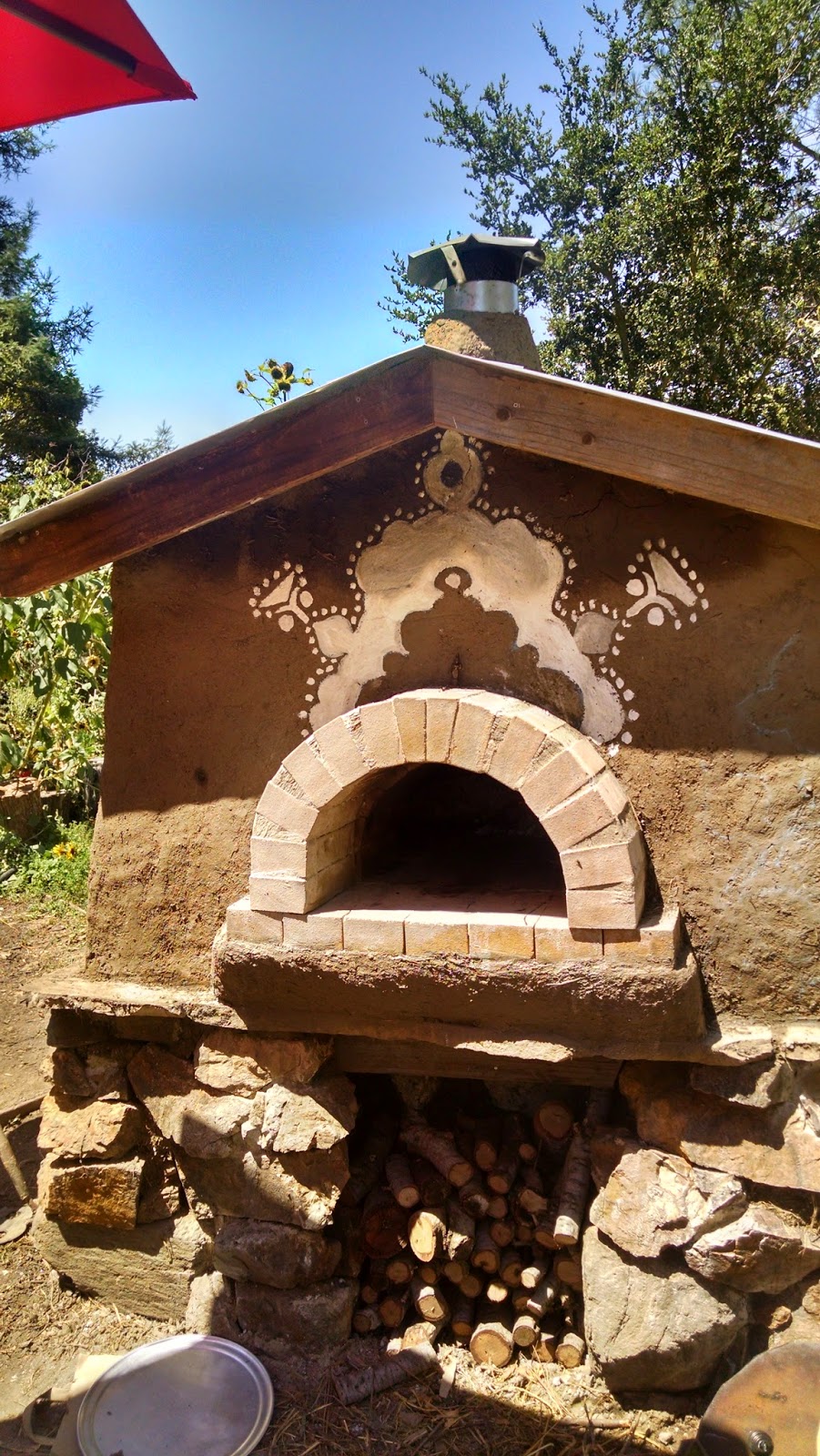Notes on our measurements from class:
Ratios used in construction:
Thermal Mass-
1 Felton Sand : 1 Aggregate : 1 Clay (site soil)
Cob-
1 Aggregate (sifted) : 1 Clay (site soil) + straw
Insulation-
75% Sawdust, though at times slightly less (redwood, from Lumber Baron) + Chocolate Milk consistency (site soil + water)
Plaster-
We tried 2 batches. We applied a batch with, 1 Sand: 1 Clay : 1 Aggregate : 1 Manure ratio, & a batch of, **1.5 Sand : 1 Clay : 1 Aggregate : 2 Manure**. Ultimately, we ended up preferring the second mixture & replastering wall that had the first kind.
Amount:
We made approximately this many batches of the following of each material:
Thermal Mass- estimate 5-6 total batches.
Cob - not 100% sure, can account for 2 batches for Permie class + 3 batches from 7/21 + 2 double batches (=4) 7/23 + maybe 5 more the following class = 14?
Insulation - not 100% sure, can account for 4 made as of 7/23
Plaster - not 100% sure. Estimate at least 3-4 batches made.
I setup a Facebook community & affinity group for Natural Building at Merritt this week & posted some photos from our class project. If you can email me photos you took during the class I will post them to group & if anyone uses Facebook & wants to be an admin or editor, I'll add anyone who'd like to, including past class participants.
https://www.facebook.com/MerrittCollegeNaturalBuilding
Ratios used in construction:
Thermal Mass-
1 Felton Sand : 1 Aggregate : 1 Clay (site soil)
Cob-
1 Aggregate (sifted) : 1 Clay (site soil) + straw
Insulation-
75% Sawdust, though at times slightly less (redwood, from Lumber Baron) + Chocolate Milk consistency (site soil + water)
Plaster-
We tried 2 batches. We applied a batch with, 1 Sand: 1 Clay : 1 Aggregate : 1 Manure ratio, & a batch of, **1.5 Sand : 1 Clay : 1 Aggregate : 2 Manure**. Ultimately, we ended up preferring the second mixture & replastering wall that had the first kind.
Amount:
We made approximately this many batches of the following of each material:
Thermal Mass- estimate 5-6 total batches.
Cob - not 100% sure, can account for 2 batches for Permie class + 3 batches from 7/21 + 2 double batches (=4) 7/23 + maybe 5 more the following class = 14?
Insulation - not 100% sure, can account for 4 made as of 7/23
Plaster - not 100% sure. Estimate at least 3-4 batches made.
I setup a Facebook community & affinity group for Natural Building at Merritt this week & posted some photos from our class project. If you can email me photos you took during the class I will post them to group & if anyone uses Facebook & wants to be an admin or editor, I'll add anyone who'd like to, including past class participants.
https://www.facebook.com/MerrittCollegeNaturalBuilding




































































































































































